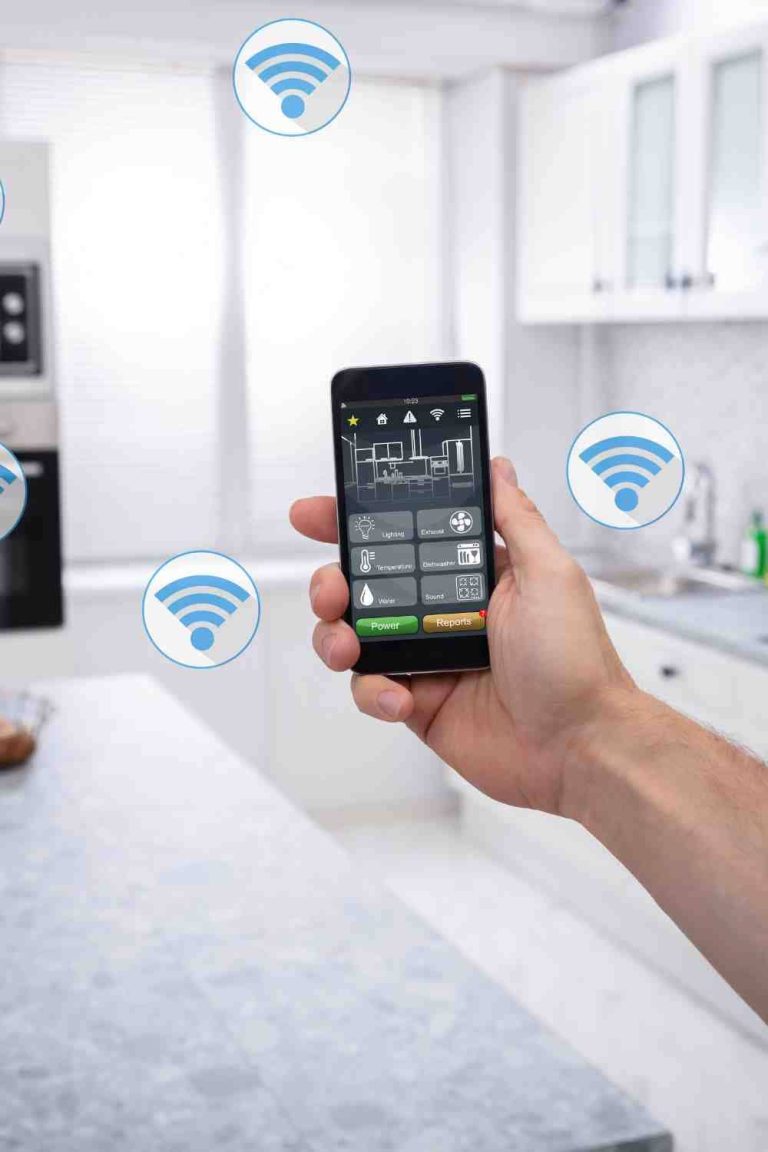Can Smart Home Devices Be Hacked? Stay Secure with These Proven Strategies!
Yes, smart home devices can be hacked, posing security risks for users. In recent years, as the trend of using smart devices in homes has accelerated, so has the concern over their vulnerability to hacking.
These devices, such as smart thermostats, security cameras, and voice assistants, are connected to the internet and can be controlled remotely. However, this connectivity also opens up avenues for hackers to gain unauthorized access, compromising both the privacy and safety of the user.
As the number of breach incidents continues to rise, it is crucial for smart home device manufacturers and users to prioritize cybersecurity measures to protect against potential hacks and ensure a safe and secure smart home experience.
Understanding The Vulnerabilities Of Smart Home Devices
Smart home devices may be vulnerable to hacking, posing a potential threat to privacy and security. With the increasing popularity of these devices, it’s crucial to understand the risks involved and take necessary precautions. Stay informed to protect your smart home from potential cyber-attacks.

Smart home devices have become increasingly popular in recent years, allowing homeowners to control various aspects of their homes with ease. From thermostats and lighting systems to security cameras and door locks, these devices offer convenience and connectivity like never before. With an estimated global market size of over $100 billion by 2026, it’s clear that smart home devices are here to stay. The potential risks and vulnerabilities associated with smart devices
While smart home devices offer numerous benefits, it’s important to be aware of the potential risks and vulnerabilities that come along with them. Hackers are constantly evolving their techniques, finding new ways to exploit these devices for their own gain. From eavesdropping on conversations to gaining unauthorized access to personal information, the consequences of a hacked smart home device can be far-reaching. How smart devices can be exploited by hackers
Smart devices can be exploited by hackers through various means, making it crucial for homeowners to take proactive measures to protect their devices and personal information. Some common methods used by hackers include:
- Weak or default passwords: Many users neglect to change the default passwords on their smart devices, making it easier for hackers to gain access. It’s important to choose strong, unique passwords for each device and change them regularly.
- Outdated firmware: Manufacturers often release firmware updates to fix vulnerabilities and enhance security. Failing to update your smart devices can leave them exposed to potential attacks.
- Insecure Wi-Fi networks: Hackers can exploit vulnerabilities in your home’s Wi-Fi network to gain access to connected devices. Ensure that your Wi-Fi network is password protected and set up a separate guest network for visitors.
- Unauthorized apps and third-party integrations: Installing apps or integrating third-party services that are not authorized or from trusted sources can introduce vulnerabilities to your smart home ecosystem. Stick to official app stores and carefully review permissions before installing any new applications.
- Lack of encryption: Without proper encryption, data transmitted between your devices and the cloud can be intercepted and accessed by unauthorized individuals. Always prioritize devices that use strong, industry-standard encryption protocols. By being aware of these vulnerabilities and taking necessary precautions, homeowners can significantly reduce the risk of their smart home devices being hacked. Regularly updating firmware, using strong passwords, securing Wi-Fi networks, and being cautious with app installations are crucial steps towards maintaining a secure smart home environment. Remember, staying vigilant is key to protecting your privacy and the integrity of your connected devices.
Assessing The Security Of Your Smart Home Network
Assessing the Security of Your Smart Home Network is vital to ensure the safety and privacy of your connected devices. As smart home technology becomes more prevalent, hackers are finding new ways to exploit vulnerabilities in these devices. It’s important to take steps to secure your network and protect your smart home devices from potential hacking attempts. In this article, we will discuss the importance of a secure network for smart home devices and provide you with steps to secure your Wi-Fi network. Let’s dive in!

The Importance Of A Secure Network For Smart Home Devices
A secure network is the foundation of a safe and smart home environment. With the increasing number of smart devices connected to our home networks, the risk of unauthorized access and data breaches also grows. Hackers can exploit vulnerabilities in your network to gain access to your smart home devices, giving them the ability to control your security cameras, unlock your doors, or access sensitive information.
To protect your smart home devices and safeguard your privacy, it is essential to assess the security of your network regularly. By taking proactive measures, you can help prevent potential security breaches and ensure a more secure and reliable smart home experience.
Steps To Secure Your Wi-fi Network
Securing your Wi-Fi network is the first step in fortifying your smart home against hacking attempts. There are several steps you can take to strengthen your Wi-Fi security:
Creating A Strong Password
A strong Wi-Fi password is the first line of defense against unauthorized access to your network. When setting up your Wi-Fi, make sure to choose a password that is long, complex, and unique. Avoid using common passwords or personal information that can be easily guessed. Additionally, consider changing your Wi-Fi password regularly to minimize the risk of it being compromised.
Enabling Network Encryption (wpa2)
Enabling network encryption, specifically the Wi-Fi Protected Access 2 (WPA2) protocol, adds an extra layer of security to your Wi-Fi network. WPA2 encryption ensures that the data transmitted between your devices and the router is encrypted, making it difficult for hackers to intercept or decipher the information. Upgrade your router’s firmware to support WPA2 encryption if it is not already enabled.
Disabling Remote Management
Remote management allows you to access and control your router settings remotely. While it can be convenient, it also poses a security risk if hackers gain access to it. To reduce the risk, it is advisable to disable remote management and only access your router settings when connected directly to your home network.
Implementing Security Measures For Your Router
Aside from securing your Wi-Fi network, it’s crucial to implement additional security measures for your router itself. This includes changing the default login credentials, keeping the router firmware up to date, and regularly reviewing and configuring router settings according to your specific needs. By taking these precautions, you can ensure that your router remains secure and less susceptible to hacking attempts.
By following these steps and continually assessing the security of your smart home network, you can significantly reduce the risk of hacking incidents and protect your connected devices and personal information. Remember, a secure smart home network is the key to enjoying the convenience and peace of mind offered by smart home technology.
Protecting Your Smart Home Devices From Cyber attacks
As smart home devices become more prevalent in households around the world, concerns about their security have also grown. The reality is that these devices, like any other internet-connected technology, are susceptible to hacking if proper precautions are not taken. In this article, we will explore some essential steps you can take to safeguard your smart home devices from cyberattacks and ensure your peace of mind.

Keeping Your Devices Up To Date
Regularly updating your smart home devices is crucial for maintaining their security. Manufacturers often release firmware updates that address vulnerabilities and improve overall device functionality. By keeping your devices up to date, you not only ensure their optimal performance but also protect them from potential cyber threats.
Importance Of Firmware Updates
Firmware updates typically contain security patches, bug fixes, and other enhancements that address vulnerabilities discovered since the device’s release. These updates help protect smart home devices from new hacking techniques and ensure that any existing security loopholes are closed. Additionally, firmware updates may introduce new features and improvements, making it even more critical to stay updated.
How To Check For Updates
Checking for updates on your smart home devices is a simple process. Most devices have a dedicated app or control panel where you can find the option to check for updates. Open the app or access the control panel of your device, navigate to the settings or system menu, and look for the “Software Update” or “Firmware Update” section. Simply follow the prompts to initiate the update process and ensure that your devices are running on the latest software version.
Tips For Creating Strong And Unique Passwords For Your Devices
Creating strong and unique passwords is essential for securing your smart home devices. A strong password typically contains a combination of uppercase and lowercase letters, numbers, and special characters. Avoid using easily guessable information like your name, birthdate, or address. Instead, opt for a series of random characters that are difficult for others to crack.
To further enhance password security, consider using password management tools that can generate complex passwords and securely store them for you. This way, you can have unique passwords for each device without the fear of forgetting them.
Enabling Two-factor Authentication For Added Security
Two-factor authentication (2FA) is an additional layer of security that adds an extra step to the login process of your smart home devices. With 2FA, you will need to provide a second form of verification, typically a unique code sent to your mobile device, in addition to your password. Enabling 2FA can significantly reduce the risk of unauthorized access to your devices, even if someone manages to obtain your password.
Restricting Access To Your Devices Through User Permissions
Another important step in protecting your smart home devices is setting proper user permissions. Each device should have its own user accounts with different levels of access. This ensures that only authorized individuals can control and modify the device’s settings. By restricting access through user permissions, you can prevent potential breaches and maintain control over your devices.
In conclusion, safeguarding your smart home devices from cyberattacks requires a proactive approach. By keeping your devices up to date, creating strong and unique passwords, enabling two-factor authentication, and restricting access through user permissions, you can significantly reduce the risk of unauthorized access and protect your home’s smart ecosystem.
Safeguarding Your Smart Home Network From Unauthorized Access
With the increasing popularity of smart home devices, the concern of whether these devices can be hacked has become a common question among homeowners. While smart home devices bring convenience and automation to our lives, it’s essential to take steps to safeguard your smart home network from unauthorized access. In this article, we will explore several measures you can implement to ensure the security of your smart home network.

Securing Your Smart Home Hub
Your smart home hub acts as the command center for all your connected devices, making it a prime target for potential hackers. By following these steps, you can enhance the security of your smart home hub:
- Choose a reputable hub.
- Secure hub access and login credentials.
Securing Hub Access And Login Credentials
To prevent unauthorized access to your smart home hub, it is crucial to secure your access and login credentials. Here’s what you can do:
- Change default usernames and passwords: By using unique and strong credentials, you significantly decrease the chances of someone gaining unauthorized access.
- Disable unnecessary features and services: Many smart home hubs offer a range of features and services that you may not need. By disabling these unnecessary functionalities, you minimize potential security vulnerabilities.
Securing Your Smart Home Devices Individually
In addition to securing your smart home hub, it is essential to take measures to secure each individual smart home device connected to your network. Here are a few steps you can take:
- Change default usernames and passwords: Similar to the hub, changing the default login credentials of each device ensures that hackers cannot easily gain access to it.
- Disable unnecessary features and services: Just like the hub, each smart home device may have additional features that you don’t need. Disabling these can help reduce potential security risks.
- Utilize a separate network for smart devices: Creating a dedicated network for your smart home devices adds an extra layer of security, preventing potential breaches from affecting your main network.
By implementing these security measures, you can reduce the risk of unauthorized access to your smart home network. Safeguarding your smart home is essential to protect your privacy and enjoy the benefits of a connected and automated lifestyle.
Monitoring For Suspicious Activity And Responding To Potential Threats
Monitoring for suspicious activity and responding to potential threats is crucial when it comes to securing your smart home devices. With the increasing popularity of these devices, cybersecurity threats have also become more prevalent. Hackers can exploit vulnerabilities in these devices to gain unauthorized access and compromise your privacy and security.
Setting Up Alerts For Unusual Activity On Your Smart Devices
Setting up alerts for unusual activity on your smart devices is an effective way to monitor for potential security breaches. Many smart home devices have built-in features that allow you to receive notifications when there is suspicious activity, such as unauthorized access attempts or unusual usage patterns. By enabling these alerts, you can quickly respond to any potential threats and take necessary actions to protect your home network.
Utilizing Security Software And Monitoring Tools
Utilizing security software and monitoring tools is crucial for enhancing the protection of your smart home devices. There are several security solutions available that can help safeguard your devices against hacking attempts. These software programs often include features such as advanced threat detection, encryption, and real-time monitoring. By utilizing these tools, you can actively monitor your devices and detect any suspicious activities or vulnerabilities.
Intrusion Detection Systems
Intrusion detection systems (IDS) play a vital role in safeguarding your smart home devices from potential cyber threats. IDS monitor network traffic and analyze it for any signs of intrusion or malicious activity. These systems can detect unusual behavior, such as unauthorized access attempts or abnormal data transfers, and send alerts to the user. By deploying an IDS, you can strengthen your home network’s security and respond proactively to any potential threats.
Network Monitoring Apps
Network monitoring apps enable you to keep a close eye on your home network’s activity. These apps provide real-time visibility into the devices connected to your network, the data being transmitted, and any unusual patterns or connections. By using network monitoring apps, you can identify any unauthorized devices or suspicious activities and take immediate action to mitigate the risks.
Taking Immediate Action If A Device Is Compromised
If you suspect that a smart home device has been compromised, it is crucial to take immediate action to prevent further damage. Start by disconnecting the affected device from your home network to isolate it from other devices. Change the passwords for all your connected devices and your home Wi-Fi. Contact the manufacturer or customer support for guidance on addressing the issue and restoring the device’s security.
Steps To Recover And Mitigate Potential Damage
In the event of a security breach, it is important to quickly recover and mitigate any potential damage. First, update the firmware or software of your compromised device, as manufacturers often release patches to fix vulnerabilities. Conduct a thorough scan of your network with reliable security software to ensure no other devices have been compromised. If necessary, consider consulting a cybersecurity professional to perform a detailed analysis and assist you in strengthening your overall smart home security.
Frequently Asked Questions Of Can Smart Home Devices Be Hacked
How Do I Secure My Smart Home Device?
To secure your smart home device, follow these guidelines: 1. Set a strong and unique password. 2. Keep the device’s software up to date. 3. Disable unnecessary features and close unused ports. 4. Use a secure Wi-Fi network and change the default login credentials.
5. Install a reputable antivirus and firewall software for added protection.
What Are The Signs That Your Home Wi-fi Has Been Hacked?
Signs of a hacked home Wi-Fi include slow internet speed, unfamiliar devices on the network, unauthorized changes to router settings, frequent disconnections, and unexpected data usage.
Are Smart Devices A Security Risk?
Yes, smart devices can pose security risks due to potential vulnerabilities. These devices may be susceptible to hacking or unauthorized access, leaving personal data and privacy at risk. It is important to take precautionary measures, such as regularly updating device software and using strong passwords, to mitigate these risks.
How Do You Stop Smart Devices From Spying On You?
To stop smart devices from spying on you: disable unnecessary features, review permissions and privacy settings, keep your devices updated with security patches, use strong and unique passwords, and consider using a virtual private network (VPN) for added protection.
Conclusion
To sum up, while smart home devices offer convenience and efficiency, they also pose potential security risks. Without proper protection measures, hackers can exploit vulnerabilities and gain unauthorized access. However, by following best practices such as using strong passwords, updating firmware, and implementing network security protocols, users can significantly reduce the chances of their devices being hacked.
Remember, being cautious and informed is the key to keeping your smart home secure.






